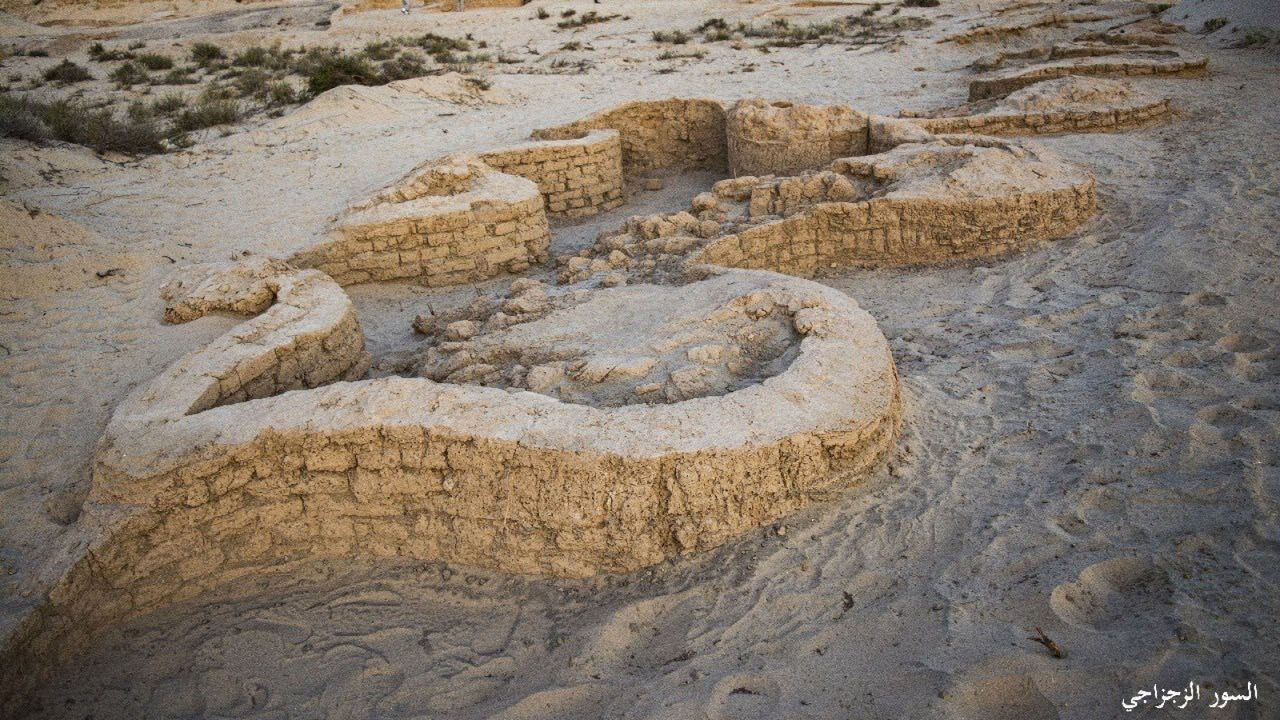Archaeologists have discovered a 3,500-year-old military fortress with a distinctive zigzag-style wall in the North Sinai Desert of Egypt, not far from the Mediterranean coast. Remarkably well preserved, the fort even contains remnants of ovens and a hunk of fossilized dough that the fortress’ soldiers never got a chance to eat.
Artifacts from the roughly 2-acre (0.8 hectares) fortress suggest it may have been built during the reign of Thutmose I (circa 1504 to 1492 B.C.), according to a translated statement from the Egyptian Ministry of Tourism and Antiquities. Thutmose I was a pharaoh known for expanding Egypt’s empire into modern-day Syria, which helps explain the fortress’ strategic location.
The fortress was discovered at Tell el-Kharouba, an archaeological site near an ancient military road known as the “Way of Horus” or “Horus military road,” named after the Egyptian falcon-headed god of the sky and war. This road extended across the northern Sinai Desert, connecting the Nile Delta to other parts of the eastern Mediterranean. Other fortresses have been found along this historic route, the ministry noted.
One of the walls inside the fortress features a zigzag pattern, running from north to south and dividing part of the western section that was used as a residential area. According to Hesham Hussein, undersecretary for Lower Egypt and Sinai Archaeology with the Egyptian Ministry of Tourism and Antiquities who led the excavation team, the zigzag design “helped reinforce the wall’s stability and reduce the impact of wind and sand erosion.”
Some of the outer recesses of the fortress contained small ovens likely used for daily domestic activities. It was near one of these ovens that the team found the fossilized dough.
The large fortress was well guarded. Archaeologists have uncovered 11 defensive towers, with some featuring “foundation deposits” made of pottery buried during construction. Some pottery pieces bear the name of Thutmose I stamped on them. In ancient Egypt, foundation deposits were commonly buried as ritual offerings at newly built structures.
Given its size, the fortress would have accommodated a large number of soldiers. Hussein estimated the garrison likely ranged between 400 and 700 soldiers, with an average of around 500. Within the fortress, archaeologists found residences for soldiers, and interestingly, volcanic rock from the Aegean Islands—possibly used in construction.
The excavation team is exploring whether a nearby port may have helped supply the garrison.
“This discovery of this fort is a very exciting one,” said James Hoffmeier, an archaeologist and professor at Trinity International University who has excavated another fortress in the Sinai Desert at Tell el-Borg. Though not involved in the new excavation, Hoffmeier explained that the newfound fort and the previously discovered one at Tell el-Borg are “part of the military road from Egypt to Canaan which made Egypt’s control of the east Mediterranean coast possible for most of four centuries.”
He added that Egypt controlled the coastline into Canaan for the majority of the New Kingdom period, which lasted from around 1550 to 1070 B.C. The finding that the new fortress was likely built under the orders of Thutmose I supports the long-held view that the pharaoh was the father of Egypt’s empire in Western Asia and likely played a key role in initiating this defense system, which succeeding kings later expanded with additional forts.
Gregory Mumford, an Egyptologist and anthropology professor at the University of Alabama at Birmingham who was not involved with the excavation, told Live Science that research at the site will “greatly expand our understanding of the nature of Egypt’s early New Kingdom’s securement of Northeast Sinai along the ‘Ways of Horus’” and provide more insight into how Egypt guarded its eastern border.
Excavation and analysis of the site’s remains are ongoing. This discovery continues to shed light on Egypt’s military strategies and imperial reach during one of its most powerful eras.
https://www.livescience.com/archaeology/ancient-egyptians/3-500-year-old-egyptian-military-fortress-with-ancient-ovens-and-fossilized-dough-discovered-in-sinai-desert
